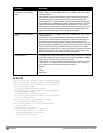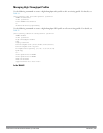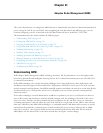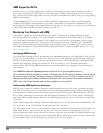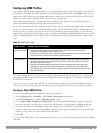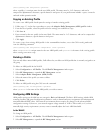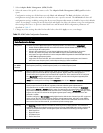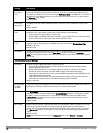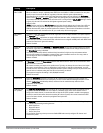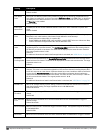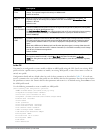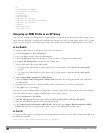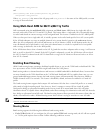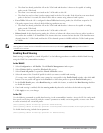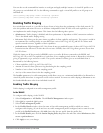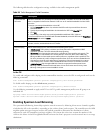
Setting Description
Min Tx EIRP Minimum effective isotropic radiated power (EIRP) from 3 to 33 dBm in 3 dBm increments. You may also
specify a special value of 127 dBm for regulatory maximum to disable power adjustments for
environments such as outdoor mesh links. Note that power settings will not change if the Assignment
option is set to disabled or maintain. Higher power level settings may be constrained by local regulatory
requirements and AP capabilities. In the event that an AP is configured for a Min Tx EIRP setting it cannot
support, this value will be reduced to the highest supported power setting.
Default: 9 dBm
NOTE: Consider configuring a Min Tx Power setting higher than the default value if most of your APs are
placed on the ceiling. APs on a ceiling often have good line of sight between them, which will cause
ARM to decrease their power to prevent interference. However, if the wireless clients down on the floor
do not have such a clear line back to the AP, you could end up with coverage gaps.
Multi Band
Scan
If enabled, single radio channel APs scans for rogue APs across multiple channels. This option requires
that Scanning is also enabled.
(The Multi Band Scan option does not apply to APs that have two radios, as these devices already scan
across multiple channels. If one of these dual-radio devices are assigned an ARM profile with Multi Band
enabled, that device will ignore this setting.)
Default: disabled
Rogue AP
Aware
If you have enabled both the Scanning and Rogue AP options, Dell APs may change channels to contain
off-channel rogue APs with active clients. This security features allows APs to change channels even if
the Client Aware setting is disabled.
This setting is disabled by default, and should only be enabled in high-security environments where
security requirements are allowed to consume higher levels of network resources. You may prefer to
receive Rogue AP alerts via SNMP traps or syslog events.
Default: disabled
Scan Interval If Scanning is enabled, the Scan Interval defines how often the AP will leave its current channel to scan
other channels in the band.
Off-channel scanning can impact client performance. Typically, the shorter the scan interval, the higher
the impact on performance. If you are deploying a large number of new APs on the network, you may
want to lower the Scan Interval to help those APs find their optimal settings more quickly. Raise the Scan
Interval back to its default setting after the APs are functioning as desired.
The supported range for this setting is 0–2,147,483,647 seconds.
Default: 10 seconds
Active Scan When the Active Scan checkbox is selected, an AP initiates active scanning via probe request. This
option elicits more information from nearby APs, but also creates additional management traffic on the
network. Active Scan is disabled by default, and should
not be enabled
except under the direct
supervision of Dell Support.
Default: disabled
ARM Over the
Air Updates
The ARM Over the Air Updates option allows an AP to get information about its RFenvironment from its
neighbors, even the AP cannot scan. If this feature is enabled, when an AP on the network scans a
foreign (non-home) channel, it sends other APs an Over-the-Air (OTA) update in an 802.11 management
frame that contains information about the scanning AP's home channel, the current transmission EIRP
value of its home channel, and one-hop neighbors seen by that AP.
Default: enabled
Scanning The Scanning checkbox enables or disables AP scanning across multiple channels. Disabling this option
also disables the following scanning features:
l Multi Band Scan
l Rogue AP Aware
l Voip Aware Scan
l Power Save Scan
Do not disable Scanning unless you want to disable ARM and manually configure AP channel and
transmission power.
DellPowerConnectW-SeriesArubaOS6.2 | User Guide AdaptiveRadioManagement (ARM) | 352



